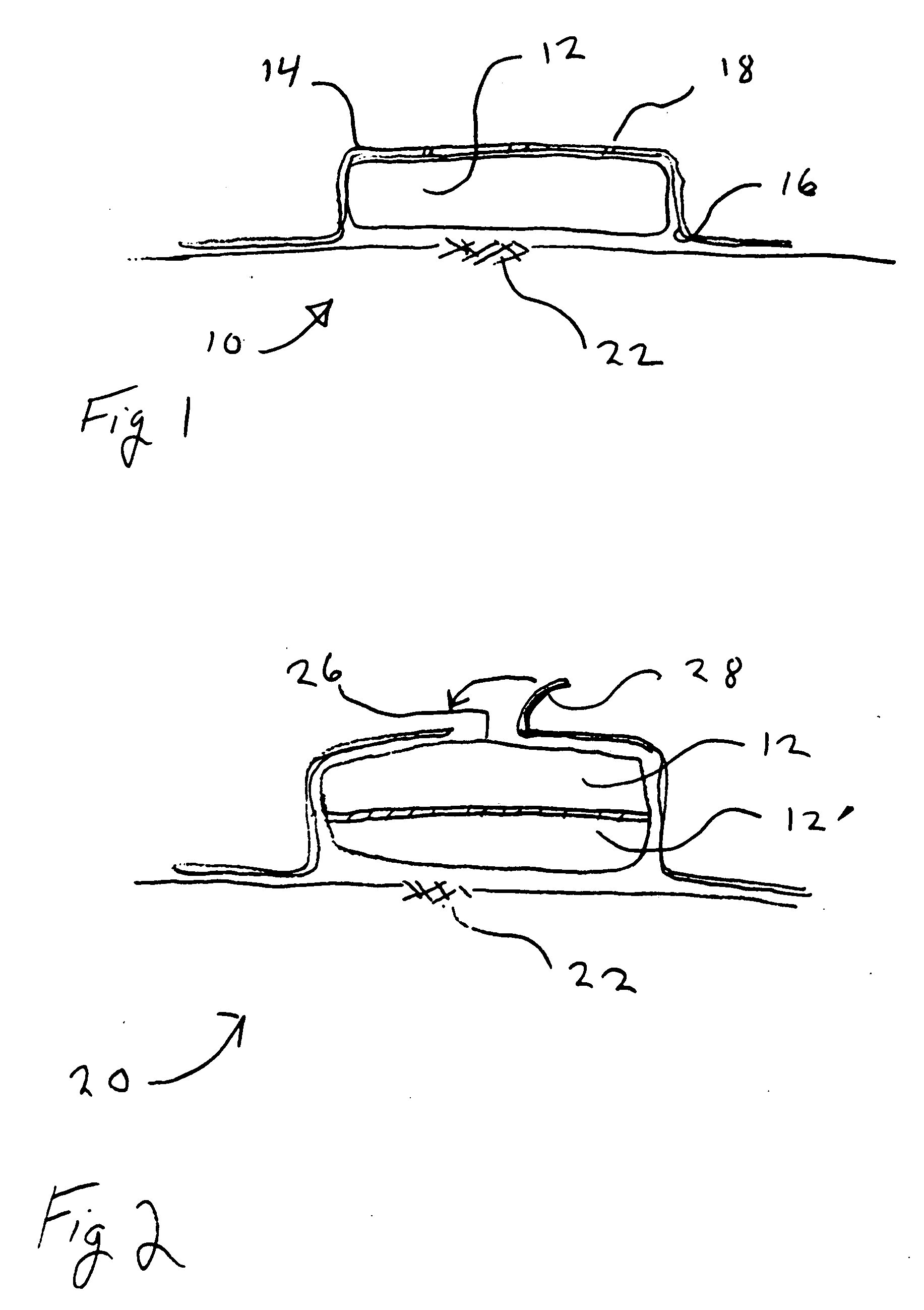Oxygen releasing material
a technology of oxygen-releasing materials and compositions, applied in the field of compositions, can solve the problems of toxic systemic effects of excess oxygen, inability to heal optimally, and inability to properly sterile bandages, and achieve the effect of significant disinfectant properties and enhanced wound healing
- Summary
- Abstract
- Description
- Claims
- Application Information
AI Technical Summary
Benefits of technology
Problems solved by technology
Method used
Image
Examples
Embodiment Construction
[0017] The following description is provided to enable any person skilled in the art to make and use the invention and sets forth the best modes contemplated by the inventor of carrying out his invention. Various modifications, however, will remain readily apparent to those skilled in the art, since the general principles of the present invention have been defined herein specifically to provide an oxygen releasing bandage based on polyvinyl acetal sponge.
[0018] The present invention is based on the observation that hydrogen peroxide forms stable complexes with organic polymers that are already used for bandages and wound treatment. Many surgical and other wound dressings and sponges are formed from polyvinyl acetal (also known as polyvinyl alcohol / acetal) (“PVAA”) foam. This material is highly absorbent and does not shed lint or other materials into a wound. As mentioned above it is known that iodine will complex with this polymer to form a useful disinfecting dressing. The present...
PUM
| Property | Measurement | Unit |
|---|---|---|
| soaking time | aaaaa | aaaaa |
| temperature | aaaaa | aaaaa |
| thickness | aaaaa | aaaaa |
Abstract
Description
Claims
Application Information
 Login to View More
Login to View More - R&D
- Intellectual Property
- Life Sciences
- Materials
- Tech Scout
- Unparalleled Data Quality
- Higher Quality Content
- 60% Fewer Hallucinations
Browse by: Latest US Patents, China's latest patents, Technical Efficacy Thesaurus, Application Domain, Technology Topic, Popular Technical Reports.
© 2025 PatSnap. All rights reserved.Legal|Privacy policy|Modern Slavery Act Transparency Statement|Sitemap|About US| Contact US: help@patsnap.com


